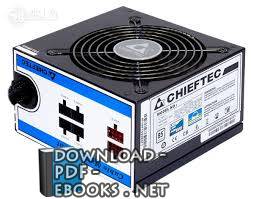📘 قراءة كتاب موسوعة كاملة عن Power Supply أونلاين


موسوعة كاملة عن
Voltage spikes
In electrical engineering, spikes are fast, short duration electrical transients in voltage (voltage spikes), current (current spikes), or transferred energy (energy spikes) in an electrical circuit.
Fast, short duration electrical transients (overvoltages) in the electric potential of a circuit are typically caused by
Lightning strikes
Power outages
Tripped circuit breakers
Short circuits
Power transitions in other large equipment on the same power line
Malfunctions caused by the power company
Electromagnetic pulses (EMP) with electromagnetic energy distributed typically up to the 100 kHz and 1 MHz frequency range.
Inductive spikes
In the design of critical infrastructure and military hardware, one concern is of pulses produced by nuclear explosions, whose nuclear electromagnetic pulses distribute large energies in frequencies from 1 kHz into the gigahertz range through the atmosphere.
The effect of a voltage spike is to produce a corresponding increase in current (current spike). However some voltage spikes may be created by current sources. Voltage would increase as necessary so that a constant current will flow. Current from a discharging inductor is one example.
For sensitive electronics, excessive current can flow if this voltage spike exceeds a material's breakdown voltage, or if it causes avalanche breakdown. In semiconductor junctions, excessive electric current may destroy or severely weaken that device. An avalanche diode, transient voltage suppression diode, transil, varistor, overvoltage crowbar, or a range of other overvoltage protective devices can divert (shunt) this transient current thereby minimizing voltage.
While generally referred to as a voltage spike, the phenomenon in question is actually an energy spike, in that it is measured not in volts but in joules; a transient response defined by a mathematical product of voltage, current, and time.
Voltage spikes, also known as surges, may be created by a rapid buildup or decay of a magnetic field, which may induce energy into the associated circuit. However voltage spikes can also have more mundane causes such as a fault in a transformer or higher-voltage (primary circuit) power wires falling onto lower-voltage (secondary circuit) power wires as a result of accident or storm damage.
Voltage spikes may be longitudinal (common) mode or metallic (normal or differential) mode. Some equipment damage from surges and spikes can be prevented by use of surge protection equipment. Each type of spike requires selective use of protective equipment. For example, a common mode voltage spike may not even be detected by a protector installed for normal mode transients.
Power increases or decreases which last multiple cycles are called swells or sags, respectively. An uninterrupted voltage increase that lasts more than a minute is called an overvoltage. These are usually caused by malfunctions of the electric power distribution system.
موسوعة كاملة عن Power Supply
power supply ماهو
طريقة عمل دائرة power supply
power supply شرح
power supply pdf
شرح مفصل عن البور سبلاي
البور سبلاي للموبايل
مكونات البور سبلاي بالصور
شرح البور سبلاي
حجم الكتاب عند التحميل : 674.3 كيلوبايت .
نوع الكتاب : pdf.
عداد القراءة:
اذا اعجبك الكتاب فضلاً اضغط على أعجبني و يمكنك تحميله من هنا:

شكرًا لمساهمتكم
شكراً لمساهمتكم معنا في الإرتقاء بمستوى المكتبة ، يمكنكم االتبليغ عن اخطاء او سوء اختيار للكتب وتصنيفها ومحتواها ، أو كتاب يُمنع نشره ، او محمي بحقوق طبع ونشر ، فضلاً قم بالتبليغ عن الكتاب المُخالف:
 قبل تحميل الكتاب ..
قبل تحميل الكتاب ..
يجب ان يتوفر لديكم برنامج تشغيل وقراءة ملفات pdf
يمكن تحميلة من هنا 'http://get.adobe.com/reader/'


 منصّة المكتبة
منصّة المكتبة